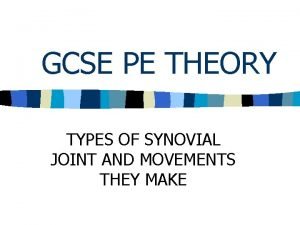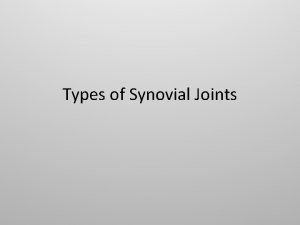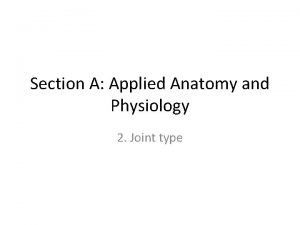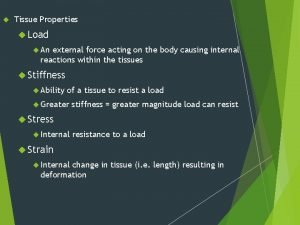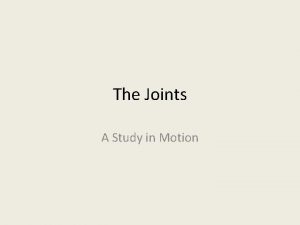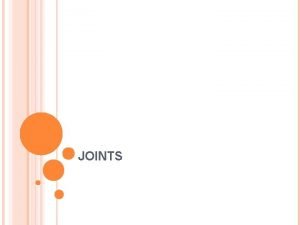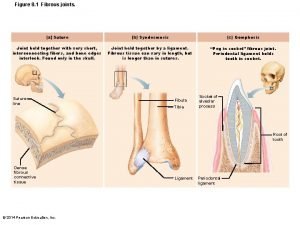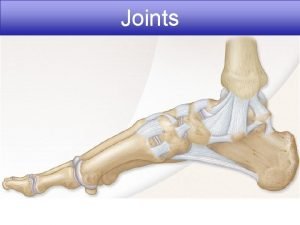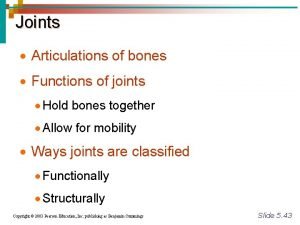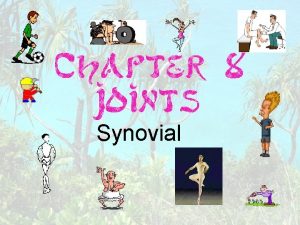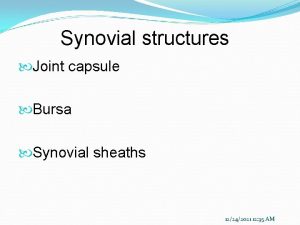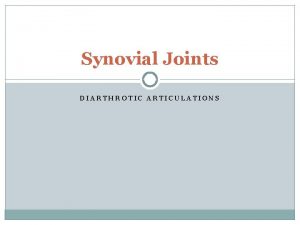GCSE PE THEORY TYPES OF SYNOVIAL JOINT AND









- Slides: 9

GCSE PE THEORY TYPES OF SYNOVIAL JOINT AND MOVEMENTS THEY MAKE

Types of joint movement n Extension = Opening a joint n Flexion = Closing a joint n Adduction = Moving towards an imaginary centre line n Abduction = Moving away from an imaginary centre line n Rotation = Turning a limb clockwise or anti-clockwise.

TYPES OF SYNOVIAL JOINT n Your shoulder can move in more directions than your knee. That’s because it’s a different kind of joint. n There actually six types of synovial joint you need to know about

1. Ball and Socket Joints § The most flexible joints and also the strongest. § These allow swing and rotation and are very stable. § The hip and the shoulder are excellent examples. So this allows flexion, extension, adduction, abduction and rotation

2. Hinge Joints These are found at the elbow and the knee. They allow movement backwards and forwards n This allows flexion and extension n

3. Gliding The bones move a little bit in all directions by sliding over each other. n Like between the tarsals in the foot or carpals in the hand. n

4. Pivot A joint which allows rotation in the socket. The atlas and axis (first and second vertebrae under the head) allow your head to rotate. n The forearm twists and untwists (flip your hand back and forth) because of a pivot joint between the radius and ulna. n Only allows rotation n

5. Saddle Like in the thumb n The joint can move forwards and backwards, left to right – but it can’t rotate. n Allows flexion, extension, adduction and abduction n

6. Condyloid Like the wrist. n The joint can move forwards and backwards, left to right – but it can’t rotate. n Allows flexion, extension, adduction and abduction. n
